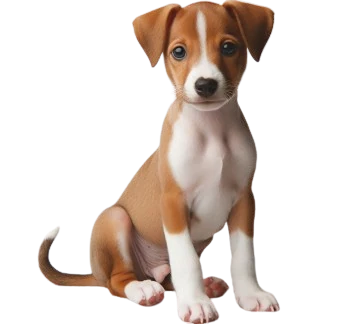
The Austrian Pinscher is a dog breed originating from Austria, known for its loyalty, intelligence, and energy. It is a medium-sized dog that combines traits of a guard dog and a companion dog, making it an ideal companion for active families.
The Austrian Pinscher is a well-proportioned dog, measuring between 40 and 50 cm at the withers and weighing between 12 and 20 kg. Its body is muscular, with a broad chest and a straight back. Its head is of medium size, with a slightly rounded skull and bright, expressive eyes. Its ears can be cropped or left natural, with a "V" shape.
The coat of the Austrian Pinscher is short, dense, and shiny. The colors of its coat can vary, but the most common shades are black and tan, red, and fawn. Its coat requires little maintenance, with regular brushing sufficient to remove dead hair and keep it healthy.
Males average between 45 and 50 cm at the withers, while females measure between 40 and 45 cm. Males typically weigh between 14 and 20 kg, while females usually weigh between 12 and 18 kg. This medium size makes it an agile and dynamic dog, suitable for various activities.
The Austrian Pinscher is an intelligent, active, and protective dog. It is very attached to its family and can be reserved with strangers, making it a good guard dog. Early socialization is needed to help it feel comfortable with other animals and people. Playful and affectionate, it is perfect for families with children.
The Austrian Pinscher is generally healthy but may be prone to hereditary issues such as joint disorders. It is important to provide regular veterinary care to monitor its health and prevent potential diseases.

The Austrian Pinscher Puppy is a small breed of dog originally from Austria, known for its energetic personality and agility. This compact and muscular dog has a short, shiny coat that requires minimal grooming. The Austrian Pinscher is intelligent, curious, and alert, making it an excellent companion dog as well as a good watchdog. It is active and requires daily mental and physical stimulation to avoid boredom. Although affectionate with its family, it can be independent at times and requires firm but gentle training. This dog is suited for homes with children and active individuals.
The price of an Austrian Pinscher Puppy can vary depending on the breeder, pedigree, and quality of the dog. On average, you should budget around 800 to 1,200 euros.
The Austrian Pinscher is an energetic and intelligent dog breed, known for its lively temperament and protective instinct. Training an Austrian Pinscher requires patience, consistency, and an understanding of its specific needs. Here are some tips for successfully training your Austrian Pinscher.
Early Socialization: Socialization is essential for the Austrian Pinscher. Expose your puppy to various environments, people, and animals from an early age. This will help it become a balanced and sociable dog, reducing the risk of aggressive or fearful behaviors.
Positive Reinforcement: Use positive reinforcement methods to encourage good behaviors. Rewards such as treats, toys, or verbal praise are very effective. Avoid harsh punishments that can harm the trust relationship between you and your dog.
Physical and Mental Exercise: The Austrian Pinscher is an active breed that needs physical and mental exercise to stay healthy. Daily walks, interactive games, and training sessions are essential for maintaining its physical and mental well-being.
Learning Basic Commands: Teach basic commands like "sit", "lie down", "stay", and "come" as soon as possible. These commands are fundamental for your dog's safety and control in various situations.
Respect for Protective Instinct: The Austrian Pinscher has a strong protective instinct. Encourage this trait while teaching it to differentiate between real threats and normal situations. A good balance between protection and sociability is essential.
Consistency and Patience: Be consistent in your rules and expectations. All family members should follow the same guidelines to avoid confusing the dog. Patience is also crucial, as learning can take time.